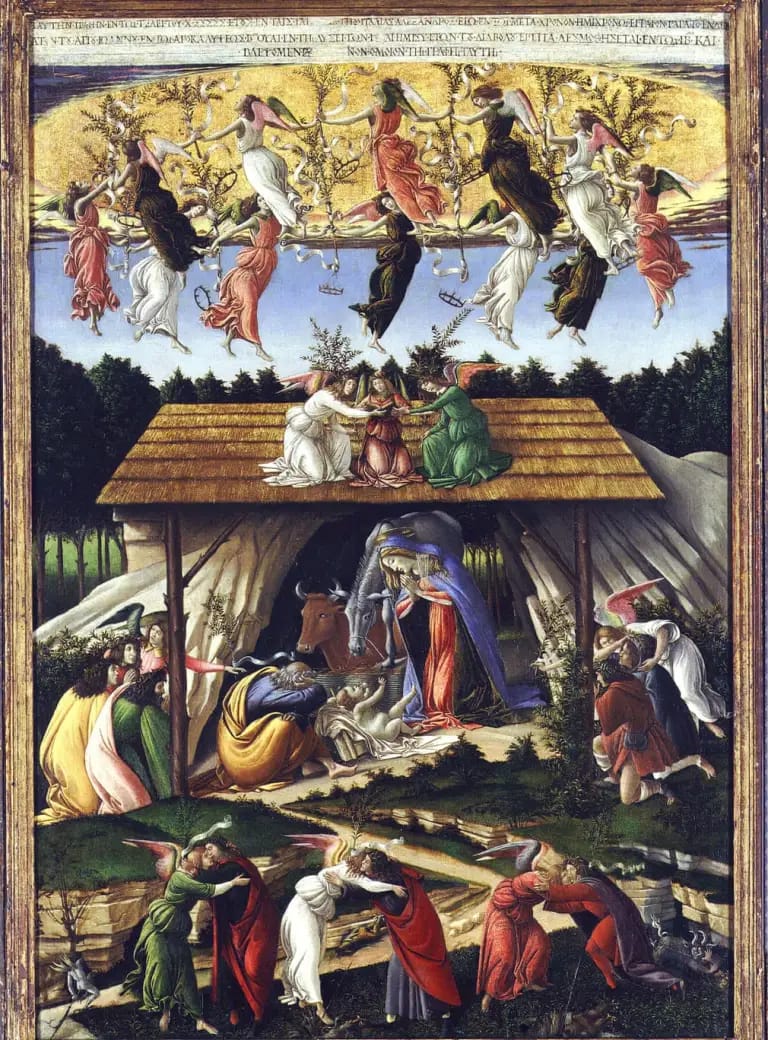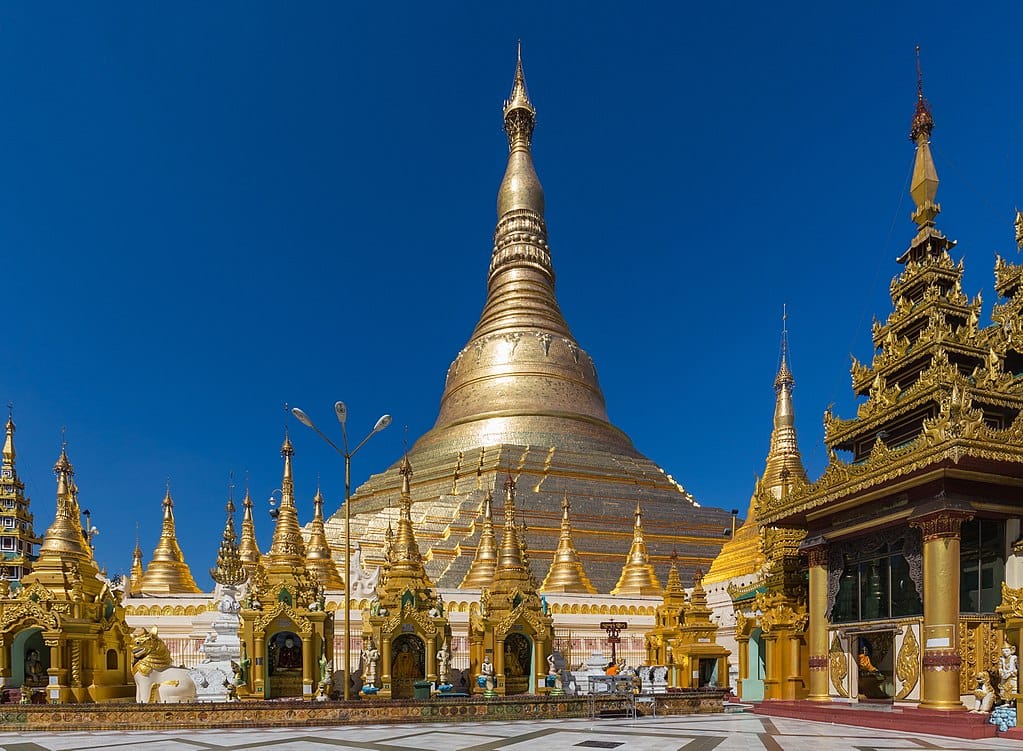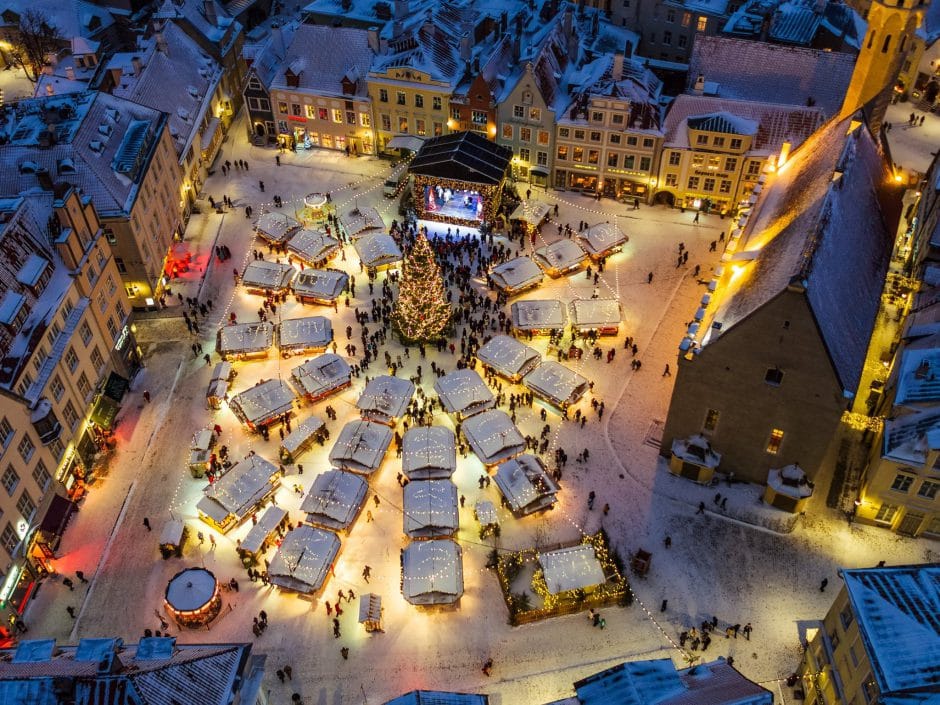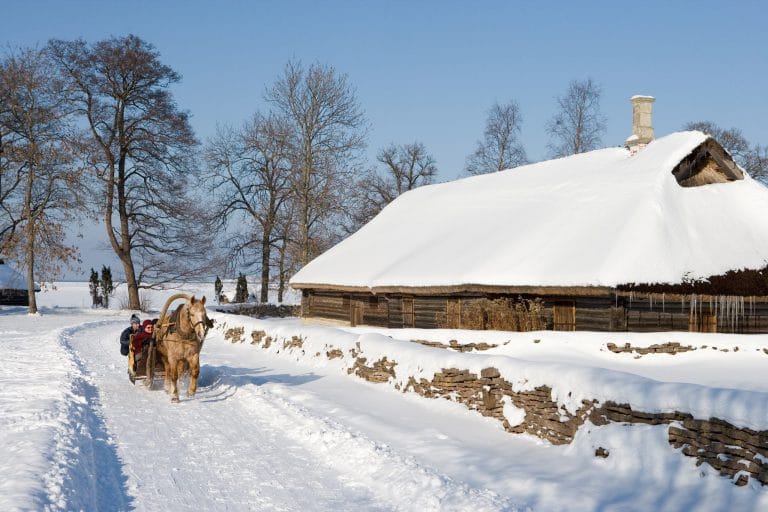- The Culture Explorer
- Posts
- Alhambra's Layers of History and Majesty
Alhambra's Layers of History and Majesty
The Alhambra's story begins atop ancient Roman ruins, where its foundations were laid during Spain's time under the Roman Empire. The Romans, known for their strategic military outposts, chose this hilltop location for its defensive advantages. When the empire fell, their fortifications crumbled into disrepair, leaving behind ruins that would later become the birthplace of a cultural masterpiece. In 889 A.D., Sawwar ibn Hamdun, a local leader in a fractured Al-Andalus, constructed a modest fortress over the Roman remnants, ensuring the site’s survival through centuries of political turbulence.

Dawn on Charles V palace in Alhambra, Granada, Spain. Photo by Jebulon - Wikimedia, CC0.
The name "Alhambra" comes from the Arabic "al-Hamrā," meaning "the red one," inspired by the reddish clay surrounding the site. This distinct clay was evident in the ancient ruins that early Muslim settlers encountered, and it imbued the fortress with a unique identity. Over time, the name evolved to "al-Qal’at al-Ḥamrā," or "the red fortress," a poetic reflection of the structure’s appearance.

Night view of Alhambra from Mirador de San Nicolas. Photo by Amjad Sheikh - Wikimedia, CC BY 4.0.
Located on a hill overlooking Granada, the Alhambra commands breathtaking views of the Sierra Nevada and the plains below. Its strategic position made it an ideal stronghold, and over centuries, it grew from a modest fort into a sprawling palace-city. The site spans 35 acres, and its elevated location not only ensured security but also inspired the ambitious designs of its later rulers.

Depiction of the Muwallads in Iberia, from The Cantigas de Santa Maria. Photo courtesy of Wikipedia.
The first recorded mention of the Alhambra came during a conflict in the late 9th century. Under Abdullah ibn Muhammad, the emir of Córdoba, a battle between Muladies and Arabs forced Abdullah’s forces to seek refuge in the fortress. Accounts from this time describe it as a small, reddish structure with weak walls, far from the grandeur it would later achieve. However, even then, it symbolized resilience in the face of adversity.

A Court in the Alhambra at the Time of the Moors (1876) by Edwin Lord Weeks.
The Alhambra’s transformation began in 1238 under Muhammad I, founder of the Nasrid Dynasty and the Emirate of Granada. Born Muhammad ibn al-Ahmar, he was a visionary leader who sought to solidify his kingdom’s power as Muslim rule in Iberia declined. Inspecting the ancient ruins, he initiated construction to rebuild the fortress and lay the groundwork for a palace-city. His efforts marked the beginning of a golden age for the Alhambra.

The Convent of Saint Francis was built over the remains of a former Nasrid palace. The building is now a Parador (state-owned hotel). Photo courtesy of Wikimedia Creative Commons.
The Nasrid Emirs expanded the Alhambra into a small city, incorporating six palaces, numerous towers, bathhouses, and an advanced irrigation system called acequias. This system supplied water to the palace and gardens, ensuring self-sufficiency. The Nasrids’ prosperity and cultural achievements were reflected in the Alhambra, which became a center of governance and a symbol of their architectural mastery.

Exterior of the Palace of Charles V. Photo by Рустам Абдрахимов, CC BY 3.0.
Central to the Alhambra’s identity is its hydraulic system, a marvel of engineering reminiscent of the Hanging Gardens of Babylon. Before the Nasrids, the fortress relied on a basic cistern. The new system brought water to the palace’s courtyards and fountains, making it a literal and symbolic source of life. This innovation was essential to the Alhambra’s design as a "paradise on earth."

Muhammad I kissing the hand of Ferdinand III of Castile, while surrendering Jaén and agreeing to be his vassal (1883 painting by Pedro González Bolívar).
By 1492, the Christian Reconquista ended Muslim rule in Spain, and the Alhambra was claimed by Ferdinand and Isabella. It became the royal court where Columbus secured funding for his voyages. Later, Charles V attempted to leave his mark by commissioning a Renaissance-style palace within the complex. While unfinished, this addition introduced a European layer to the Alhambra’s story.

Mullioned windows of the Hall of the Two Sisters in the Alhambra, by Jean Laurent (1874). Stucco decoration can be seen on the upper walls while geometric tile mosaic is seen below.
The Alhambra’s layout reflects its founders’ vision of paradise. Quadrangular buildings, connected by smaller rooms and passages, center around open courtyards with fountains and reflecting pools. This design created harmony between architecture and nature, with each addition adhering to the theme of beauty and tranquility.
Mood Gummies are cannabis based chewy supplements designed to support relaxation, stress relief, and overall emotional balance.
This cannabis startup pioneered “rapid onset” gummies
Most people prefer to smoke cannabis but that isn’t an option if you’re at work or in public.
That’s why we were so excited when we found out about Mood’s new Rapid Onset THC Gummies. They can take effect in as little as 5 minutes without the need for a lighter, lingering smells or any coughing.
Nobody will ever know you’re enjoying some THC.
We recommend you try them out because they offer a 100% money-back guarantee. And for a limited time, you can receive 20% off with code FIRST20.
Among its iconic buildings is the Royal Palace, divided into three sections: the Mexuar, for administration; the Serallo, a richly decorated palace; and the Harem, a private residential area. These structures illustrate the Nasrids' blending of function with ornate design. Charles V’s Renaissance palace within the complex adds a striking contrast to the Islamic architecture.

The Court of the Myrtles, the central courtyard of the Comares Palace. Photo by Tuxyso / Wikimedia Commons, CC BY-SA 3.0.
The Court of the Myrtles, a central feature of the Royal Palace, exemplifies the Alhambra’s focus on water and elegance. Its long pool, flanked by myrtle hedges, kept the palace cool and symbolized wealth and sophistication. The ability to maintain such a feature highlighted the ingenuity of its builders.

Ceiling of the Hall of the Ambassadors. Photo by José Luis Filpo Cabana - Wikimedia CC BY 4.0.
The Hall of Ambassadors, the largest room in the Alhambra, was designed for grandeur. Its dome rises 23 meters, and its intricately decorated walls created an atmosphere of prestige. Here, Emirs hosted dignitaries, symbolizing the political and cultural power of Granada during the Nasrid era.

The Court of the Lions and its central fountain. Photo by Sean Adams - Palacios Nazaríes in the Alhambra (Granada)., CC BY 2.0.

Fountain in Patio de los Leones, Alhambra. Photo by Liberaler Humanist - Wikimedia, CC BY-SA 3.0.
The Court of the Lions, surrounded by 124 marble columns and featuring a fountain with 12 lion statues, is one of the Alhambra’s most famous sights. Each lion symbolized strength and majesty, with water flowing through the fountain’s ingenious channels, blending art and engineering seamlessly.

Inside one of the galleries around the courtyard (west side).

Corridor and arches at the entrance to the Sala de los Abencerrajes. Photo by R Prazeres - Wikimedia, CC BY-SA 4.0.
The Hall of the Abencerrajes carries a legend of betrayal and tragedy. Named after a noble family rumored to have been massacred here, its beauty contrasts with its grim history. The intricately designed stucco and muqarnas dome remain a testament to Nasrid craftsmanship.

The Lindaraja Courtyard, formed in the 16th century. Photo by Rabe! - Own work, CC BY-SA 4.0.
Finally, the Generalife, a summer retreat outside the main palace, exemplifies the Alhambra’s connection to nature. Built in the 14th century and restored in the 20th, its lush gardens and tranquil courtyards provided a space for reflection. Together, the Alhambra and the Generalife represent the architectural and cultural legacy of its many founders and builders, each adding a layer to its rich history.
The Roman Empire didn’t just conquer lands—it shaped the blueprint of modern civilization.
How much of our world owes its origins to ancient Rome? Let’s uncover the legacy. 🧵⤵️
— Culture Explorer (@CultureExploreX)
3:45 PM • Dec 4, 2024
The Roman Empire was, in some ways, a force for good.
Despite war, cruelty and forced gladiatorial combat...
It single-handedly ensured the survival of humanity's most remarkable artistic triumphs: 🧵 (thread)
— Classical Aegis (@ClassicalAegis)
2:15 PM • Dec 4, 2024
Art

Nativity and Adoration of the Shepherds (1485) by Domenico Ghirlandaio
Art

Mystic Nativity (1500) by Sandro Botticelli
Sandro Botticelli’s Mystic Nativity is unlike any traditional Nativity scene you’ve ever seen. Painted in 1500, it’s a mesmerizing blend of religious devotion and apocalyptic vision. Angels rejoice, shepherds kneel in awe, and a golden light bathes the entire scene. But look closer, and you’ll notice darker undertones—demons lurking in the corners and angels casting them out, reflecting the turmoil of Botticelli’s time during the rise of Savonarola in Florence. This painting isn’t just about the birth of Christ; it’s a vivid depiction of hope triumphing over chaos, making it deeply symbolic and unforgettable.
Architecture

Shwedagon Pagoda. Yangon, Myanmar. Photo by Marcin Konsek / Wikimedia Commons, CC BY-SA 4.0.
The Shwedagon Pagoda in Yangon is a jaw-dropping masterpiece of Buddhist architecture that radiates both serenity and grandeur. Towering at 326 feet, its golden stupa is encrusted with thousands of diamonds and gemstones, including a massive 76-carat diamond at the top. Built on Singuttara Hill, it’s said to house sacred relics of four Buddhas, making it a deeply spiritual site. The surrounding terraces, intricate carvings, and smaller shrines create a harmonious blend of elegance and devotion. Visiting at sunset, when the gold glows against the evening sky, is like stepping into another world—it’s awe-inspiring.
Christmas in Estonia

Christmas market in Tallinn’s Old Town in 2019. Photo by Kaupo Kalda, courtesy of Estonianworld.
In Estonia, Christmas is a rich tapestry of traditions blending ancient pagan customs, Christian beliefs, and modern practices. Known as jõulud, the Estonian word for Christmas derives from the ancient Scandinavian term jul, symbolizing midwinter celebrations rather than solely marking Christ's birth. This duality reflects Estonia’s deep-rooted connection to pre-Christian solstice traditions and its later embrace of Christian customs. From lighting Advent candles to festive celebrations on Christmas Eve, Estonians honor both the mystical and the sacred, creating a uniquely Nordic holiday experience.

A traditonal Estonian rural setting in the past. Photo by the Estonian Open-Air Museum.
Estonian Christmas is steeped in folk traditions dating back thousands of years. Preparations begin on St. Thomas’s Day, December 21, with brewing ale and preparing feasts, while noisy activities like milling and spinning were avoided to respect the "good ghosts." The celebrations peak on Christmas Eve, marked by sauna rituals, fortune-telling, and lavish meals featuring pork, sauerkraut, and blood sausage. The festivities continue with visiting friends, lighting candles on relatives' graves, and enjoying simple pleasures like homemade decorations and mulled wine. This harmonious blend of history, spirituality, and communal joy defines Estonia's enduring Christmas spirit.
Food

Gingerbread Cookies. Photo by Nika at AllRecipes.
A great Christmas season recipe is Classic Gingerbread Cookies—a festive favorite that’s fun to make and delicious to eat.
Ingredients:
3 cups all-purpose flour
1 tsp baking soda
2 tsp ground ginger
1 tsp cinnamon
1/4 tsp ground cloves
1/2 tsp salt
3/4 cup unsalted butter, softened
3/4 cup packed brown sugar
1 large egg
1/2 cup molasses
1 tsp vanilla extract
Instructions:
In a bowl, whisk together flour, baking soda, ginger, cinnamon, cloves, and salt.
In a separate large bowl, cream the butter and brown sugar until light and fluffy. Mix in the egg, molasses, and vanilla until combined.
Gradually add the dry ingredients, mixing until a soft dough forms. Divide the dough into two discs, wrap in plastic, and chill for at least an hour.
Preheat the oven to 350°F (175°C) and line baking sheets with parchment paper.
Roll out the dough on a floured surface to about 1/4 inch thick. Use cookie cutters to create festive shapes like stars, trees, or gingerbread people.
Place the cookies on the prepared baking sheets and bake for 8-10 minutes, or until edges are slightly firm.
Let them cool completely before decorating with icing, sprinkles, or candies.
These cookies are perfect for holiday gatherings and decorating sessions with family or friends!

Reply